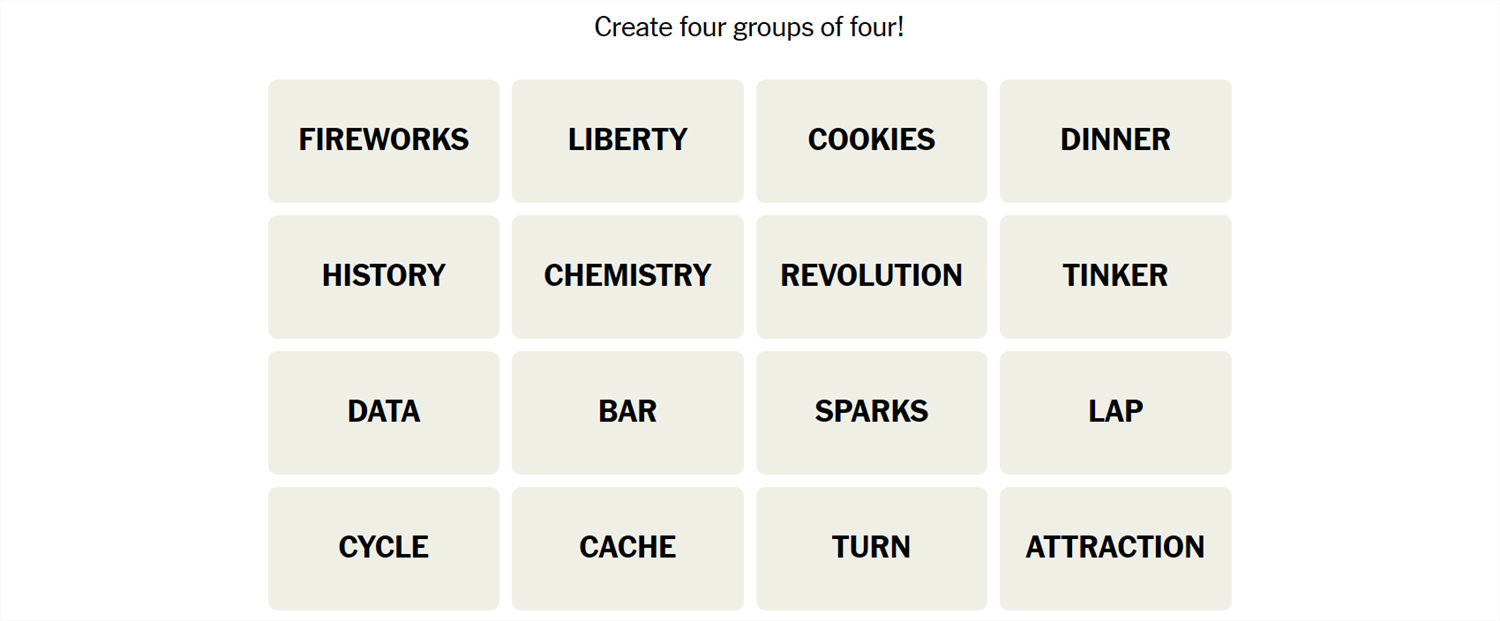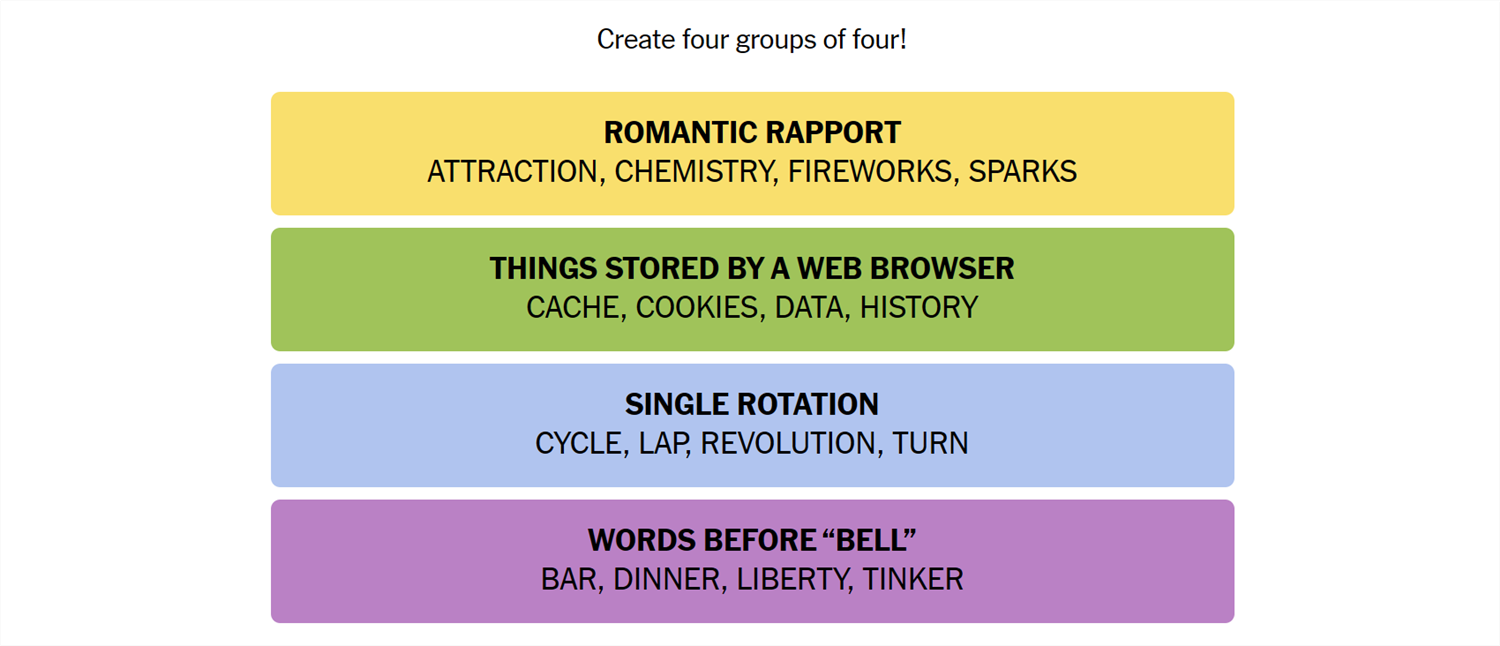Connections is a game from the New York Times that challenges you to find the association between words. It sounds easy, but it isn’t—Connections categories can be almost anything, and they’re usually quite specific. If you need a hand getting the answers, we’ve got you covered.
What Is Connections?
Connections is a game from the New York Times. The objective is simple: sort 16 words into groups of 4. Each group of words will be connected by some common idea or theme. That common element could be anything. We have seen everything from games that rely on the number of letters in the words to categories that require you to spot an extra letter at the end of the word. Sometimes they’re references to economics, other times they reference fairy tales. There is no telling what sort of association there will be between words.
Once you’re confident you understand the connection, select 4 words, then hit “Submit.” You have only four attempts in total, so don’t be too guess-happy.
Hints for Today’s Connections Groups
Here are a few hints for the 389th Connections game to get you started:
- Yellow: When there is a specific kind of interest between people.
- Green: You might clear these to speed things up.
- Blue: A bit like spinning.
- Purple: Not all of these literally ring, but some do.
If you still need help, the actual group names are:
- Yellow: Romantic Interest
- Green: Things Stored by a Web Browser
- Blue: Single Rotation
- Purple: Words Before “Bell”
Today’s NYT Connections Answers
Romantic Rapport (Yellow):
Attraction, Chemistry, Fireworks, Sparks
Things Stored by a Web Browser (Green):
Cache, Cookies, Data, History
Single Rotation (Blue):
Cycle, Lap, Revolution, Turn
Words Before Bell (Purple):
Bar, Dinner, Liberty, Tinker
How Did We Solve This Connections Game?
July 4th’s game contained words obviously meant to be associated with the holiday in the United States, but that seemed too obvious, so I ignored them from the start.
Attraction can mean a physical attraction between objects due to a force like gravity, or it can refer to an attraction between people. The first definition doesn’t really match with anything else on the board, so I went with the second, more romantic definition. That led me to chemistry, fireworks, and sparks—all terms that indicate some amount of romantic compatibility. Those words belonged to Yellow, “Romantic Rapport.”
I shuffled the board only for cache and cookies to land together, which instantly made me think of browser data. With that in mind, it was easy to pick out the words data and history, which are also browser-adjacent terms. They belonged to the Green group, which was “Things Stored by a Web Browser.”
Revolution, turn, lap, and cycle all make me think of things going around or spinning, so they seem likely to be related. The Blue group was just “Single Rotation.”
That left bar, dinner, liberty, and tinker in the Purple group. As is so often the case, this Purple proved to be about the missing word, in this case “Bell.” Properly, the group was “Words Before Bell.”
How Do You Guess Connections Groups?
There is no quick, reliable way to approach Connections like there is with Wordle, since Connections isn’t algorithmic. However, there are a few things to keep in mind that can help.
- Look for similar parts of speech. Are some words verbs and others nouns? Are some adjectives? Try mentally grouping them based on those categories and see if any other patterns jump out at you.
- Are the words synonyms? Sometimes categories will just be synonyms for a phrase, or very close to synonyms. Don’t rely too closely on this, though. Occasionally, Connections will deliberately throw in words that are sometimes synonyms to mislead you.
- Try saying the words. Sometimes, saying the words helps. One puzzle we saw included the words go, rate, faster, clip, pace, speed, move, commute, and hurry—all of which are obviously related to the idea of motion. However, when you say them, it becomes a little more obvious that only four (go, move, hurry, faster) are things you’d actually say to prompt someone to get moving.
- Expect the red herring. Connections usually has words that could be plausibly, yet incorrectly, grouped together. Take the words Bud, Corona, and Light, as an example. You might instinctively see those three words together and assume they’re lumped together in a category related to beer—but they weren’t.
- Look for distinct words. If a word on your board doesn’t have multiple meanings or can really only be used in one context, try using that word as the basis for a category.
- Shuffle the board. Sometimes, moving words around will help you look at them in new ways.
If you didn’t solve this one, don’t feel too bad—there’s always tomorrow! And those words may align with a topic you’re interested in, giving you a leg up on the competition.






